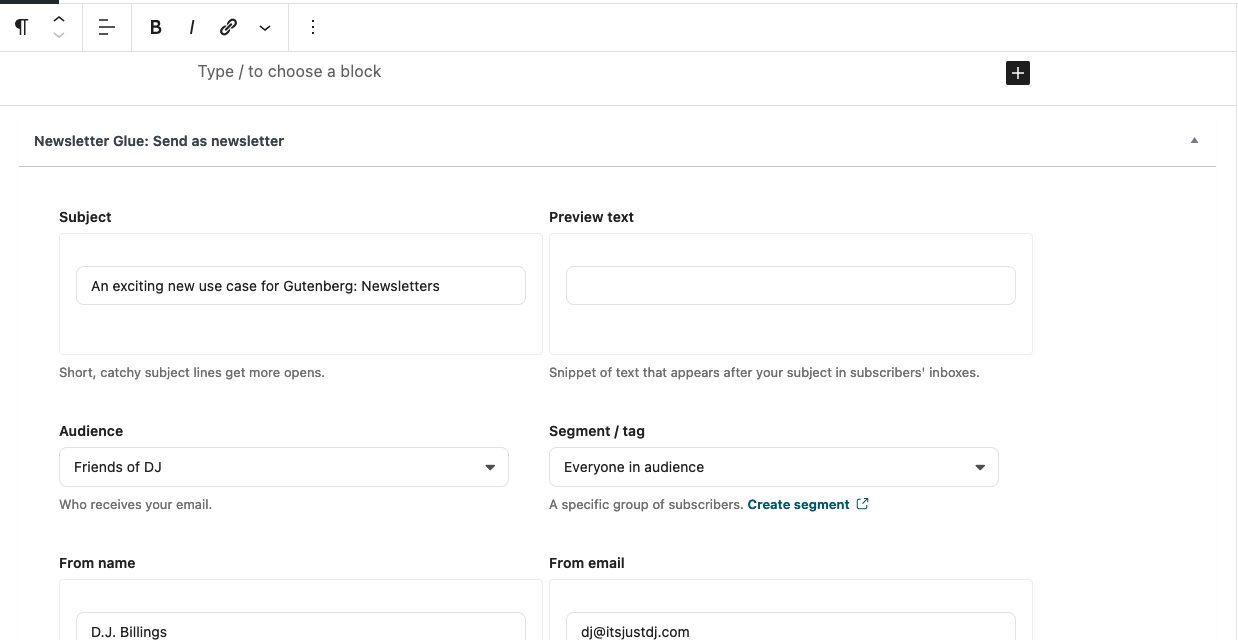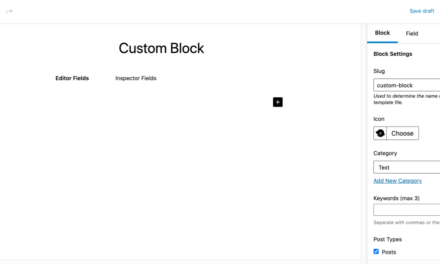If you haven’t yet dipped your nib in the Gutenberg inkwell, you should give it a try. Gutenberg has been a part of WordPress since version 5.0., and is now used by 100s of millions of WordPress websites.
As our WordPress workflow increasingly shifts towards Gutenberg, let’s look at a new use case for Gutenberg blocks that we might not have thought of before: Newsletters.
Newsletters are back, and they’re on the rise
Since the first advertising email sent in 1978, email marketing has now been around for decades. Today, email marketing is stronger than ever, and experiencing a revival. 90% of content marketers say email engagement is the top metric they track to measure content performance.
Besides the many email service providers (ESPs) that exist today, new platforms such as Substack are now getting into the newsletter game. Launched in 2017, Substack recently raised $65 million, with a market valuation at $650 million.
Twitter has also recognized the value of newsletters when they acquired Substack competitor Revue in January of 2021.
Another testament to the increasing popularity of newsletters is the fact that older, more traditional publishers like The Washington Post and The New York Times are also trying out newsletter services to attract and retain readers.
The good news is that you already have a newsletter building platform within easy reach: the Gutenberg block editor in WordPress.
Why it makes sense to use Gutenberg for your newsletters
There are many reasons why it makes perfect sense to use Gutenberg for your newsletters.
Gutenberg block editor as a powerful email builder
First, consider the ease of layout. Because a newsletter is very similar to a landing page, building it using the Gutenberg block editor makes for a more eye-catching layout. Utilizing block patterns also makes it easy to recycle different layouts in your newsletter each time.
While most email service providers provide tools for layout, some can be downright clunky and outdated. Additionally, if you switch ESPs, you’ll need to learn a new method of layout, which takes precious time away from creating your actual content.
Building your newsletter right inside WordPress is familiar and much more productive. Besides, newsletters and blog posts are two sides of the same content coin. You can streamline your work by keeping everything under the same publishing hub.
Newsletter archive is discoverable online
Another benefit of publishing your newsletter using the Gutenberg block editor is that once the newsletter goes out, it still lives on your site. That’s great for SEO and can help you gain new subscribers.
How to use Gutenberg for newsletters
Now that you understand how beneficial it can be to build your newsletter in WordPress, here’s how to do it.
First, install a super handy plugin called Newsletter Glue. The Newsletter Glue plugin uses native Gutenberg and WordPress features to publish newsletters.
Newsletter Glue takes advantage of the custom post type, adding a new area in the editor right below the post. Just write and format your post as you normally would. Before you publish, you can choose your audience and segment, adjust your subject line and preview text, and even send yourself a test email.
When you publish your post and include the option to send as an email using Newsletter Glue, it converts plain div markup into email-ready HTML code. There’s no reformatting you need to do to make your newsletter look great in your subscriber’s inboxes.
There’s also a range of custom newsletter blocks you can use. Say you want to include a social follow section or a subscribe form in your content. Simply add a new block and type “/NG.” You’ll see a range of choices in the popup that you can quickly and easily add to your post.
If you really want to see some magic in creating your newsletters using Gutenberg and Newsletter Glue, try using block patterns to repurpose layouts from previous newsletters.
You can also create your own block patterns, customizing them to fit your brand and your audience’s needs.
For example, if you have a regular weekly deals email aside from your usual newsletter content, you can set up block patterns for each. That helps the process become much more efficient, and you can focus on writing your fabulous content rather than recreating layouts.
Newsletter Glue connects to 9 ESPs, so you have a lot of choices in providers. To connect your ESP, enter your ESP account’s API key during onboarding and you’re done. The plugin will autofill your preferred audience and segment lists, so you can skip that step or manually change them before you hit Publish.
The one downside to using Newsletter Glue is that it doesn’t play well with site builders like Elementor or Divi. The code in the site builders is too complex. In those cases where the site is created using a builder, you just need to switch back to Gutenberg when writing and publishing your posts.
Newsletters in the new era of WordPress
Gutenberg is here to stay.
Since you already spend time writing in WordPress, it makes sense to stay where you’re familiar to publish your newsletter. Taking advantage of Gutenberg blocks and Newsletter Glue will allow you to build beautiful newsletter layouts on one platform.
It will be exciting to see what other use cases show up for Gutenberg.











